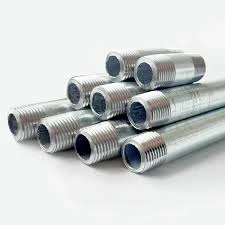-
Cangzhou Yulong Steel Co., Ltd.
-
Phone:
+86 13303177267 -
Email:
admin@ylsteelfittings.com
- English
- Arabic
- Italian
- Spanish
- Portuguese
- German
- kazakh
- Persian
- Greek
- French
- Russian
- Polish
- Thai
- Indonesian
- Vietnamese
- Zulu
- Korean
- Uzbek
- Hindi
- Serbian
- Malay
- Ukrainian
- Gujarati
- Haitian Creole
- hausa
- hawaiian
- Hebrew
- Miao
- Hungarian
- Icelandic
- igbo
- irish
- Japanese
- Javanese
- Kannada
- Khmer
- Rwandese
- Afrikaans
- Albanian
- Amharic
- Armenian
- Azerbaijani
- Basque
- Belarusian
- Bengali
- Bosnian
- Bulgarian
- Catalan
- Cebuano
- China
- China (Taiwan)
- Corsican
- Croatian
- Czech
- Danish
- Esperanto
- Estonian
- Finnish
- Frisian
- Galician
- Georgian
- Kurdish
- Kyrgyz
- Lao
- Latin
- Latvian
- Lithuanian
- Luxembourgish
- Macedonian
- Malgashi
- Malayalam
- Maltese
- Maori
- Marathi
- Mongolian
- Myanmar
- Nepali
- Norwegian
- Norwegian
- Occitan
- Pashto
- Dutch
- Punjabi
- Romanian
- Samoan
- Scottish Gaelic
- Sesotho
- Shona
- Sindhi
- Sinhala
- Slovak
- Slovenian
- Somali
- Sundanese
- Swahili
- Swedish
- Tagalog
- Tajik
- Tamil
- Tatar
- Telugu
- Turkish
- Turkmen
- Urdu
- Uighur
- Welsh
- Bantu
- Yiddish
- Yoruba

Dec . 12, 2024 06:03 Back to list
Cost Analysis of Stainless Steel Pipes and Their Market Trends
Understanding the Costs of Stainless Steel Pipes
Stainless steel pipes are widely recognized for their strength, durability, and corrosion resistance, making them a popular choice across various industries, including construction, manufacturing, and automotive. One of the most crucial factors that affect the decision to use stainless steel pipes is their cost. In this article, we will dive into the factors influencing stainless steel pipe costs and offer insights into how businesses can manage these expenses effectively.
Factors Influencing Stainless Steel Pipe Costs
1. Material Grades Stainless steel comes in several grades, each with different properties and costs. For example, 304 and 316 grades are among the most commonly used stainless steel types. 316 stainless steel contains molybdenum, making it more resistant to corrosion, particularly in marine environments. This enhanced durability often translates to a higher price. Companies must assess the specific requirements of their applications to determine the appropriate grade and balance cost with performance.
2. Pipe Dimensions The cost of stainless steel pipes is also influenced by their size and thickness. Larger diameter pipes require more material, consequently increasing the overall price. Additionally, thicker walls can add further cost due to the increased material and manufacturing processes involved. Businesses should carefully consider their pipe size requirements to optimize cost without compromising on safety or functionality.
3. Manufacturing Processes The method of manufacturing stainless steel pipes also plays a significant role in pricing. Common manufacturing techniques include seamless and welded processes. Seamless pipes are generally more expensive to produce due to the more complex techniques required to create a solid piece of steel without seams. Welded pipes, on the other hand, are typically less expensive owing to the simpler manufacturing while being suitable for many applications. Understanding these differences can help businesses make informed purchasing decisions.
4. Market Dynamics The price of stainless steel is influenced by global market dynamics, including the cost of raw materials, supply and demand fluctuations, and economic conditions. For instance, changes in the price of nickel, a key component in stainless steel, can significantly impact the overall cost. Additionally, geopolitical events and trade policies can affect the availability and pricing of stainless steel, making it essential for buyers to stay informed about market trends.
5. Production Volume Another factor to consider is the quantity of pipes being purchased. Bulk orders often come with significant discounts, thus reducing the overall per-unit cost. Businesses that anticipate ongoing needs for stainless steel pipes may benefit from negotiating bulk purchase agreements or establishing relationships with suppliers for better pricing.
stainless steel pipe cost

Strategies for Managing Costs
1. Supplier Relationships Establishing strong relationships with suppliers can lead to better pricing and more favorable terms. Suppliers often value long-term customers and may offer discounts or flexible payment options to retain their business. Regular communication about specific needs can help foster these relationships.
2. Alternative Materials In situations where the cost of stainless steel pipes is prohibitive, considering alternative materials may be beneficial. While stainless steel offers excellent corrosion resistance and longevity, other materials may be more cost-effective for specific applications. Options such as carbon steel or plastic could provide the necessary properties at a lower cost.
3. Recycling and Reusing The sustainability movement has also highlighted the opportunity to recycle stainless steel. Companies can reduce costs by using recycled stainless steel pipe, which is typically less expensive than new material. Moreover, reusing existing pipes or alternating repairs instead of replacements can yield significant savings.
4. Cost-Benefit Analysis Conducting a thorough cost-benefit analysis will aid businesses in understanding the total cost of ownership rather than merely the upfront costs. Evaluating factors such as maintenance, durability, and long-term performance can provide insights into whether the initial investment in stainless steel pipes is justified over time.
Conclusion
Stainless steel pipes offer invaluable benefits, but their costs can vary greatly based on numerous factors. By understanding what affects the pricing and implementing smart purchasing strategies, businesses can optimize their expenditures on stainless steel pipes, ensuring they balance quality and cost effectively. Whether it's through developing supplier relationships or considering alternative materials, a strategic approach to purchasing can lead to substantial savings without sacrificing functionality.
Latest news
-
ANSI 150P SS304 SO FLANGE
NewsFeb.14,2025
-
ASTM A333GR6 STEEL PIPE
NewsJan.20,2025
-
ANSI B16.5 WELDING NECK FLANGE
NewsJan.15,2026
-
ANSI B16.5 SLIP-ON FLANGE
NewsApr.19,2024
-
SABS 1123 FLANGE
NewsJan.15,2025
-
DIN86044 PLATE FLANGE
NewsApr.19,2024
-
DIN2527 BLIND FLANGE
NewsApr.12,2024
-
JIS B2311 Butt-Welding Fittings LR/SR 45°/90° /180°Seamless/Weld
NewsApr.23,2024











